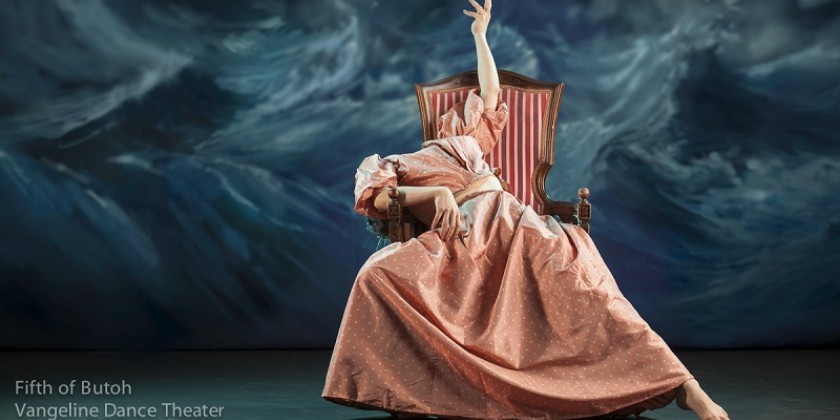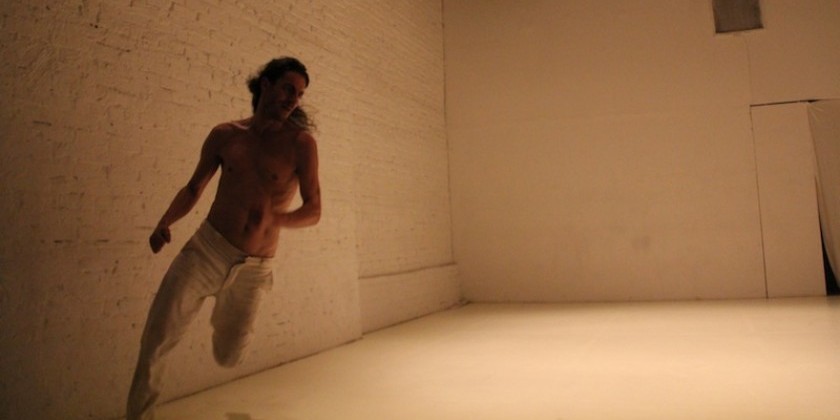Rendering Flight

A visual artist's dance: Leah Yerpe
Flying Off The Page
Emerging Artist Leah Yerpe on choreographic drawing, translating movement to the page, and the myth of IcarusSeptember 2012
Cory Nakause reporting for The Dance Enthusiast
For more info- Click Here
Cory Nakasue / The Dance Enthusiast : I’ve never seen a “still life” from you. I’ve always thought of that phrase as a contradiction in terms—is that one of the reasons you’re drawn to movement?
Leah Yerpe: I’ve done poses with a single standing figure. That’s how this work got started. When I was in grad school I was surrounded by these amazing artists, and I realized I had no idea what I wanted to do. I knew I wanted to work with the human form, so I started isolating a single figure against a plain white background, focusing on the shapes, and I realized that the body has it’s own unique language. I wanted to draw the push and pull between energies that I was finding.
 |
| Aquila, 72"x91," charcoal on paper: Artist Leah Yerpe |
TDE: Would you say you’re trying to capture qualities within movement or create them?
Yerpe: I don’t like to tell models what to do. I describe the process as an improvised, interpretative, immediate, but very slow dance that the model’s doing. As a spectator, I love to see what they give me. Any time I’ve tried to direct them, the movement ends up very stiff. It’s like their giving up their own visual language and trying to give me something I want. Everybody moves differently and I always get something more interesting if I do things that way.
.jpg) |
| Pavo, 18"x50," graphite and ink on paper: Artist, Leah Yerpe |
Yerpe: What I do is a type of post-choreography. I like to work with what they give me because the drawing process is so tightly controlled. I’m not throwing color around or wildly drawing lines, it’s very very exact—precise. I like that the work with the model is completely out of my hands.
TDE: Who models for you?
Yerpe: I’ve only once approached somebody that I saw in a concert, and it was wonderful! In the beginning I didn’t feel right approaching someone who uses their body professionally to work for free. I know what that’s like—people thinking you don’t want to get paid because you’re an artist. Now, I have a little money to pay models, but primarily I just work with interesting people who are comfortable in their bodies, and who don’t feel awkward moving independently. I want to have a variety of body types and personalities.
TDE: Do you have a movement background?
Yerpe: I wish. I love dance. If my life had gone a different way, I could see myself becoming a dancer. I grew up in a very
.jpg) |
| Apus, 18"x50," graphite and ink on paper: Artist, Leah Yerpe |
TDE: How do themes of mythology enter into your work?
Yerpe: The most interesting thing about mythology to me is how certain stories continue to resonate no matter how ancient they are. They speak clearly to the human experience—which is what all art should do. This kind of storytelling is a way of expressing the universal and profound. The show that I have coming up started with this idea that people want to escape and fly—a theme that shows up in mythology all the time—superheroes, or stories of gods taking people into heaven, people transforming into birds so they can fly away. Which led me to the Greek story of Icarus who flew to the sun with wings made of wax, and the sun melted his wings and he died. It’s told like a tragedy but I don’t think it is. He flew! What was left for him on earth? I also think of the Voyager spacecraft which left our solar system—it’s a continuation of escaping this world—and it’s this inexpressible longing to leave that I find romantic and mysterious. I don’t directly illustrate the stories, but I try to think about the tragedy and joy of those stories. I try to keep that in mind when I’m “choreographing “ the figures. In the end I don’t expect people to gravitate toward a drawing because they want to know more about that person. I hope they go to a drawing because they want to know more about themselves.
DE: Yeah, these themes of flight and escaping the prosaic body—the forces of gravity, the constraints of time, and verbal language, are all similar to what choreographers explore when making dances.
LY: Yeah, a lot of the time when I’m watching dancers perform, it’s like they’re existing on a different plane. I can capture a lot of that detail by working off of photographs. I take all of these photographs (of the models) and I cut the background out and Photoshop them. I’ll spend hours and hours moving them around to create a collage---flipping them around, and adjusting them through space, getting everything positioned just right, until it has a good flow and rhythm to it
TDE: So it’s like editing a dance video—that second round of choreography. The work has a visceral charge for me because of the great amount of detail—I can feel the movement in my body and I kind of want to touch the hair in the drawings because it looks so real. How long does a large format piece take to finish?
Yerpe: Not including the work with models, about 200 hours of actual charcoal to paper drawing—smudging, re-drawing—drawing the individual hairs. It’s an intimate process, by the end I feel like I know these bodies so well…
.jpg) |
| Leah Yerpe At Work,Photo © Jonathan Auch |
For more info- Click Here













